#manta
Explore tagged Tumblr posts
Text

Golden Trevally (Gnathanodon speciosus), juveniles, family Carangidae, order Carangiformes, school near the front of a Manta Ray (Mobula sp.), family Mobulidae, order Myliobatiformes in the South Pacific
photograph by Jake Wilton (@jakewiltonphoto)
#manta#ray#mobula#mobulidae#elasmobranch#myliobatiformes#fish#ichthyology#bony fish#jack#trevally#gnathodon#carangidae#carangiformes#animals#nature#ocean
534 notes
·
View notes
Text

Happy days of nature, skykids.

Remember, leave only footprints. This is a sanctuary, after all.
#doodle#art#digitalart#sky colt#that sky game#sky game#skykid#sky kid#scotl#sky children of the light#tgc#manta#days of nature#DoN#ocean
229 notes
·
View notes
Text

mantas mantas . get yer mantas



these little goobers dont hurt a fly . unless you are a krill in which case yes they do . while they can't be tamed , hand-feeding them krill makes them give you a blessing so you can keep up with their blistering underwater speeds .
more images below the cut !


ma-ma-ma-ma-manta
( dividers f2u )
#▣ ] ┅ naturality#blockbench#minecraft mods#mineblr#minecraft#art#manta#manta ray#giant manta ray#rays#manta rays#sea animals#marine life#fishblr#marine biology#marine biodiversity#sea life#aquatic life
209 notes
·
View notes
Text




More confluence work. The Motley Coast is full of what some other planes might think are aquatic life, but here, airracuda, sluice manta and the majestic and vast skywhale's populate the skies!! Find out more about these creatures on our twitter! All work here is mine!
#anonbeadraws#shan bennion#confluence#confluence ttrpg#ttrpg#digital art#digital design#vid dev#visual development#creatures#fish#manta#whales#design#creature design#digital
3K notes
·
View notes
Text
Manta moment
When a manta ray looks at you, it's easy to be reminded that they have the largest brain-to-body ratio of any fish - their curiosity and self-awareness is evident in their body language and eye contact. There has even been some evidence that individuals can recognize themselves in reflections, a benchmark of highly intelligent animals!
#mobula birostris#manta ray#manta#marine biology#marine bio#biology#zoology#animals#marine life#nature#science#ocean#elasmobranchs#chondrichthyes#mobula#sea life#socorro#rays#sharks and rays#marine conservation#marine science
136 notes
·
View notes
Text

In love
#doodle heaven#sky cotl#sky children of the light#krill#manta#dosy x corvus#corvus x dosy#what if you were a krill and i was a manta and we were in love? what then???#i tag them bc I was thinking about them when drawing them#bc the aesthetics are pefect
230 notes
·
View notes
Text


#cheese#manta plushie#manta#plush crab#time for crab#sky meme#sky memes#asslyn meme#asslyn memes cooking#sky children of the light#sky cotl#sky: cotl#sky: children of the light#thatskygame#thatgamesky#that game sky#that sky game#thatgamecompany#that game company#skyblr
86 notes
·
View notes
Text

122 notes
·
View notes
Text
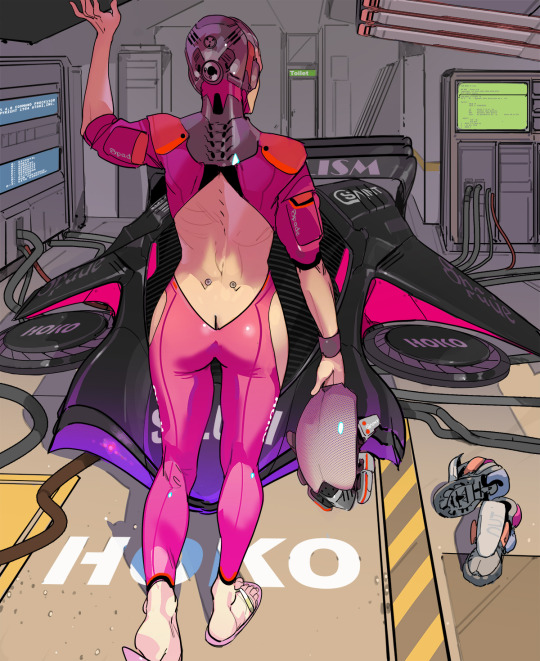
The Black Manta.
Now available for purchase on INPRNT
#box#racer#track#champion#test#speed#cyberpunk#android#femalecharacter#cyborg#race#black#manta#machinehead#machine#engine#cables#electricity#hoko#brand#illustration#digitalillustration#digitaldrawing#digotalart#retro#scifi#scan#90s
213 notes
·
View notes
Text



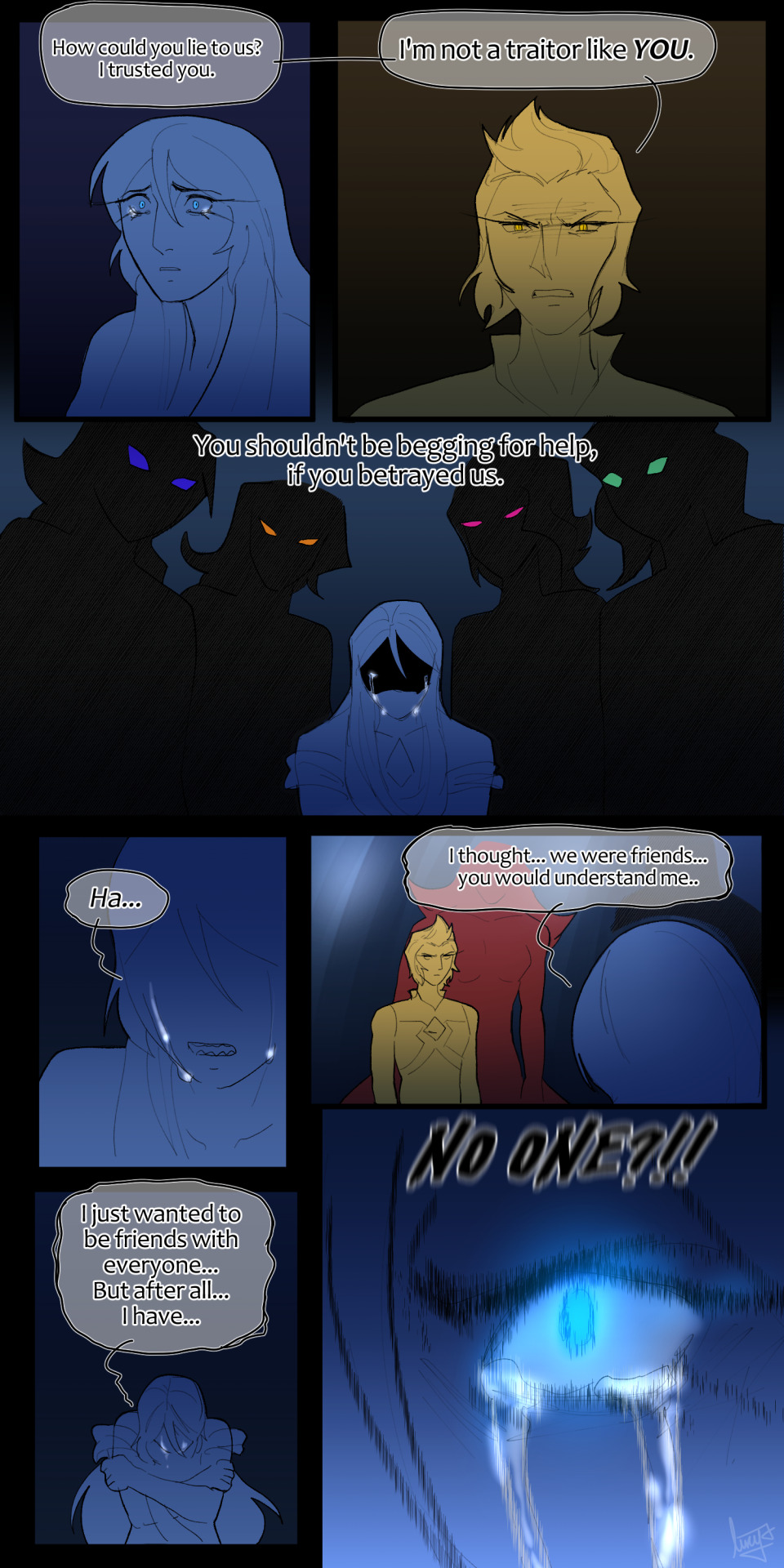


TP Dolphin's past.
#steven universe#su#su au#mermaid au#two predators au#su blue diamond#blue diamond#mermaid blue#dolphin#tp dolphin#su yellow diamond#yellow diamond#mermaid yellow#shark#tp shark#su white diamond#white diamond#mermaid white#betta#tp betta#mermaid red#manta#tp manta#my art#comic#the witness!
204 notes
·
View notes
Text

#Mark Eastwood#x-men#angel#apocalypse#banshee#beast#bishop#cable#changeling#colossus#cyclops#cypher#dazzler#deadpool#emma frost#erik the red#exodus#forge#gambit#havok#iceman#jean grey#jubilee#legion#longshot#madelyne pryor#magik#magneto#manifold#manta
47 notes
·
View notes
Text

Sky: CotL commission 🕯️
149 notes
·
View notes
Text
Wet Beast Wednesday: manta rays
It's time to spread our wings and fly, or rather swim, into another Wet Beast Wednesday. This week's topic is the wonderfully wide manta ray. These gentle giants have historically been misunderstood as dangerous and scary, but now we know better. Here's the real facts.

(Image: a SCUBA diver swimming alongside a giant manta ray, seen from above. It is a large stingray with pointed, wing-like fins along the side of its body and a large head with short tail. Two fin-like cephalic lobes extend from either side of the mouth. The back of the body is black, body with white marking on the head, just before the tail, and the tips of the wings. End ID)
Manta rays are two species of stingray: the giant manta ray Mobula birostris and reef manta ray Mobula alfredi. Mantas have historically been classified as members of their own genus, Manta, but as of 2017, they have been reclassified as members of the genus Mobula, the devil rays. In addition, the two species were thought to be the same species until 2009. As with other rays, they have flattened, disc-shaped bodies with their pectoral fins being enlarged to take up each side of the body. While bottom-swelling stingrays have rounded pectoral fins, manta ray fins have developed into pointed, wing-like structures that are used for active swimming. The width of the ray (measured from wingtip to wingtip) is about 2.2 times the length (not including the tail) in both species. The tail is shorter than the length of the body and has no stinger. Unlike most ray species, the mouth is located on the front of the body. On either side of the mouth is a fin-like cephalic lobe. These fleshy growths are flexible and are used to aid in feeding and possibly communication. Giant mantas reach a max width of 7 m (23 ft), but the average adult size is 4.5 m (15 ft). Reef mantas reach a maximum width of 5.5 m (18 ft) and an average of 3 m (10 ft). They are the largest and second largest rays in the world.
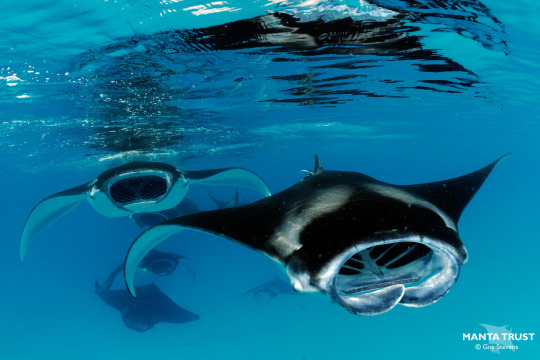
(Image: a group of reef mantas seen from the front. They are similar to the giant manta, but smaller and the white marking on their baks are more curved. Their mouths are open and the cephalic fins are curved to sit beneath the mouth. Inside the toothless mouth, the inside of the gill slits can be seen. Bits of the white underbelly are visible. End ID)
Manta rays are found in tropical to subtropical waters. Giant manta rays are found worldwide while reef mantas are primarily found in the Indo-Pacific, thought they have been recorded in the Atlantic ocean on a few occasions. Reef mantas are normally found in shallower, coastal waters while giant mantas will swim through the open ocean. They are somewhat social, sometimes swimming in groups of up to 50, but will also live on their own. Feeding is done by swimming with their mouths open and cephalic lobes angled to direct water into the mouth. They are filter feeders, targeting krill, plankton, algae, and oceanic larvae. While feeding, mantas will swim in different ways, including making somersaults. Mantas feeding in groups will perform coordinated swimming maneuvers, including swimming in giant circles. Giant mantas have been observed making dives to 400 m (1,300 ft) and they appear to target larger food at these depths, such as small fish. as with the other Mobula rays, mantas will breach out of the water. The reason they do this isn't clear. It could be to clear parasites, communicate, or for fun.
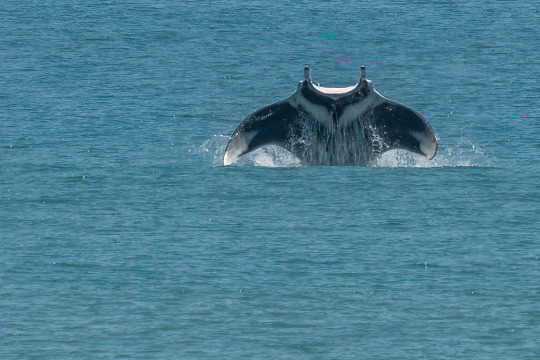
(Image: a manta in the process of breaching, with only its rear end still in the water. It is pointing straight into the air, leaving its back and the white markings on it clearly visible. End ID)
Manta rays are known as some of the smartest fish in the world. They have the largest brain-to-body size ratio of any fish. Manta rays are among the only fish capable of passing the mirror test for self awareness. The mirror test is used to determine if an animal can recognize its reflection as being itself rather than another member of its species. Manta rays exposed to mirrors showed some unique behavior that is not what they do when encountering other manta rays. This included blowing bubbles and swimming in odd ways that may be used to examine themselves or test if the reflection really is them. Manta rays are also excellent navigators, able to repeatedly find the same feeding sports or cleaner fish stations from thousands of miles away. This would indicate an excellent memory and the ability to develop a mental map of areas. Manta rays also have the ability to remember other individuals and have been shown to have a preference for spending time around specific "friends". They are also believed to engage in play behavior including acrobatic swimming with each other and maybe jumping. Playing for no purpose other than fun is a rare traits usually seen in intelligent and social species. Divers have reported that mantas are curious and will come investigate them.

(GIF: footage of a manta ray undergoing the mirror test. It is swimming up to the mirror, pausing for a second, then swimming parallel to the mirror, with the stomach facing it. End ID)
Manta ray mating seems to be triggered by the full moon and takes place at different times of the year depending on location. A male will follow a female moving at speeds of about 10 km/h (6.2 mph) and try to grab her fin in his mouth, which may take several attempts. Once he has a good grip, he will moved so their undersides are facing each other and insert a clasper into her cloaca. Claspers are paired appendages in male cartilaginous fish that are extensions of the pelvic fins that function similarly to penises. Semen runs down a groove in the clasper into the female's oviduct. The pair will then part. Females are left with scars on their fins where the males bite them. The quantity of scars can help determine how many times a female has mated. Oftentimes, a female will be followed by a train of multiple males, all attempting to mate with her. Females will bear usually one but sometimes two babies at once. Mantas are ovoviviparous, meaning the female will retain an egg inside of her that will hatch internally once the yolk supply is depleted. Once hatched, the juvenile remains inside the oviduct for some time, being fed by a milky-white nutritious substance called histotroph that the mother secretes. Once the juvenile exits the mother, it is on its own, receiving no parental care. Gestation takes 12-13 months. Mild females typically get pregnant every 1-2 years. Females seem to reach sexual maturity at 8-10 years can can live to 50 years old in the wild.
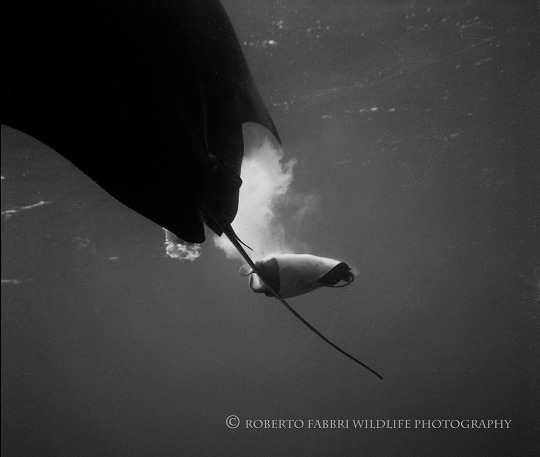

(Images: black and white photos of a manta ray giving birth. The first photo shows the juvenile having just exited the mother. The second shows the juvenile after leaving the mother, resting on some coral. The juvenile exits the mother with its fins curled up like a burrito. End ID)
The IUCN classified reef mantas as Vulnerable and giant mantas as Endangered. Their largest threat comes from overfishing, both targeted and as bycatch. Mantas are fished fro their skin, meat, and liver oil. More recently, a demand for manta gill rakers in alternative (read: quack) medicine has led to an increase in fishing and poaching after a historical decrease. Mantas are highly vulnerable to becoming entangled in fishing lines and nets. Because they need to continuously swim to force air over their gills, an entangled manta will quickly suffocate. Their attempts to free themselves typically just gets them more tangled. Manta rays are also vulnerable to boat strikes, pollution, climate change, and microplastic ingestion. Mantas are now protected in international waters by the Convention on Migratory Species of Wild Animals and have local protections on many places. Manta ray tourism has become an industry that brings in an estimated US$140 million per year to local economies. Tourists are offered the chance to observe manta rays in the wild on boat and SCUBA trips. While manta ray tourism can increase awareness of their conservation needs, it can also lead to in increased risk of injury and disease transmission to the rays. Manta rays in the past were often feared by sailors due to their size. They were named devil rays due to their cephalic lobes resembling horns and were believed to pull up anchors and drag ships off course.

(Image: Inspector Clouseau, a pink manta ray seen off Lady Elliot Island, Australia. It is believed to be the result of a mutation in pigment cells and is the only known case of a pink manta. End ID)
#wet beast wednesday#manta ray#manta#stingray#ray#fish#fishblr#fishposting#cartilaginous fish#marine biology#biology#ecology#zoology#animal facts#informative#educational#image described
80 notes
·
View notes
Text



Why do the bullies feel so gay?
25 notes
·
View notes
Text
Oceanic manta rays are the largest species of ray in the world, with a wingspan of up to 26 feet. Despite their immense size, they are completely harmless to divers - they have no barbs to speak of, unlike stingrays, and spend their time filtering the water for plankton with the help of their cephalic lobes (the big paddles on each side of their mouths). Socorran mantas have grown very used to divers, and often seek out our bubble curtains seemingly because they feel good and may help clear away parasites!
#manta#mobula birostris#endangered#dive footage#scuba#marine biology#marine bio#marine biology studyblr#marine bio studyblr#biology#zoology#marine life#animals#sea life#elasmobranchs#chondrichthyes#manta ray#socorro#mexico#cute animals
368 notes
·
View notes
Text

lookit my manta
#doodle heaven#flock#my ocs#sky cotl#sky children of the light#manta#look at it#view it#absorb it through your sense of sight#admire the manta
159 notes
·
View notes